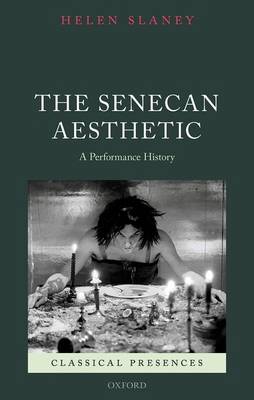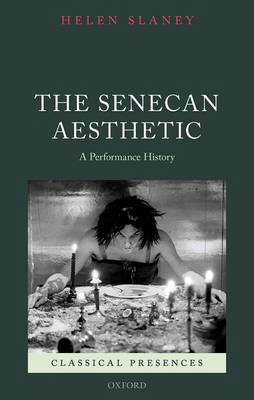
Door een staking bij bpost kan je online bestelling op dit moment iets langer onderweg zijn dan voorzien. Dringend iets nodig? Onze winkels ontvangen jou met open armen!
- Afhalen na 1 uur in een winkel met voorraad
- Gratis thuislevering in België vanaf € 30
- Ruim aanbod met 7 miljoen producten
Door een staking bij bpost kan je online bestelling op dit moment iets langer onderweg zijn dan voorzien. Dringend iets nodig? Onze winkels ontvangen jou met open armen!
- Afhalen na 1 uur in een winkel met voorraad
- Gratis thuislevering in België vanaf € 30
- Ruim aanbod met 7 miljoen producten
Zoeken
€ 273,95
+ 547 punten
Omschrijving
Alongside the works of the better-known classical Greek dramatists, the tragedies of Lucius Annaeus Seneca have exerted a profound influence over the dramaturgical development of European theatre. The Senecan Aesthetic surveys the multifarious ways in which Senecan tragedy has been staged, from the Renaissance up to the present day: plundered for neo-Latin declamation and seeping into the blood-soaked revenge tragedies of Shakespeare's contemporaries, seasoned with French neoclassical rigor, and inflated by Restoration flamboyance. In the mid-eighteenth century, the pincer movement of naturalism and philhellenism began to squeeze Seneca off the stage until August Wilhelm Schlegel's shrill denunciation silenced what he called its "frigid bombast." The Senecan aesthetic, repressed but still present, staged its return in the twentieth century in the work of Antonin Artaud, who regarded Seneca as "the greatest tragedian of history." This volume restores Seneca to a canonical position among the playwrights of antiquity, recognizing him as one of the most important, most revered, and most reviled, and in doing so reveals how theory, practice, and scholarship have always been interdependent and inseparable.
Specificaties
Betrokkenen
- Auteur(s):
- Uitgeverij:
Inhoud
- Aantal bladzijden:
- 336
- Taal:
- Engels
- Reeks:
Eigenschappen
- Productcode (EAN):
- 9780198736769
- Verschijningsdatum:
- 17/02/2016
- Uitvoering:
- Hardcover
- Formaat:
- Genaaid
- Afmetingen:
- 135 mm x 218 mm
- Gewicht:
- 498 g

Alleen bij Standaard Boekhandel
+ 547 punten op je klantenkaart van Standaard Boekhandel
Beoordelingen
We publiceren alleen reviews die voldoen aan de voorwaarden voor reviews. Bekijk onze voorwaarden voor reviews.











